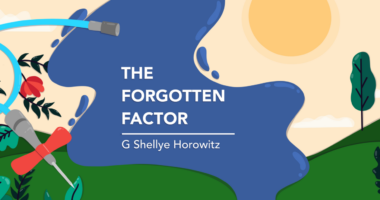Hemophilia C overview
Hemophilia C is a rare bleeding disorder caused by a deficiency of factor XI, a protein needed for blood to clot.
Symptoms can vary, with some people experiencing only mild bleeding. Unlike other types of hemophilia, hemophilia C does not typically cause spontaneous joint or muscle bleeding. However, prolonged bleeding can occur after surgery, dental procedures, or injuries.
Diagnosis of hemophilia C often relies on a combination of medical history, lab tests, and genetic analysis. While routine treatment is not usually needed if you have this inherited bleeding disorder, you may need to take extra care before surgeries or procedures with a high risk of bleeding.
Comparing hemophilia C to other types
Hemophilia A, B, and C share similarities as bleeding disorders caused by deficiencies in specific clotting factors, but there are also differences between these types.
Differences in occurrences
Hemophilia A is the most prevalent form, affecting about 1 in 5,000 male births. Hemophilia B occurs less frequently, affecting around 1 in 25,000 male births.
Hemophilia C is much rarer, with an estimated prevalence of 1 in 100,000 people, but can occur in up to 8% of Ashkenazi Jews.
Differences in mutations
A deficiency in factor VIII causes hemophilia A, while a lack of factor IX causes hemophilia B. These two types are inherited in an X-linked recessive pattern, meaning they primarily affect males, although females can be carriers.
Mutations in the F11 gene cause hemophilia C. These mutations lead to a deficiency of factor XI, a protein needed for blood clotting. People with hemophilia C may also experience difficulties generating thrombin, a crucial enzyme in the clotting process.
Differences in inheritance patterns
Hemophilia C is an autosomal recessive bleeding disorder, meaning that it occurs only if you inherit two copies of the mutated gene, one from each biological parent. Due to hemophilia C’s genetic inheritance pattern, the disorder affects men and women equally, unlike other forms of hemophilia, which primarily affect men.
However, in some cases hemophilia C can be caused in an autosomal dominant manner when only one copy of the mutated gene is inherited from either parent.
Differences in severity
The severity of hemophilia A and B depends on the level of the missing clotting factor. Severe cases can lead to spontaneous bleeding into joints and muscles.
Hemophilia C tends to cause milder symptoms, and its severity does not always correlate with factor levels.
Hemophilia C versus von Willebrand disease
Von Willebrand disease (VWD) is another bleeding disorder that is usually inherited. Unlike hemophilia, it is caused by a deficiency or dysfunction of von Willebrand factor rather than a specific coagulation factor.
Like hemophilia C, VWD follows an autosomal recessive inheritance pattern and affects both males and females equally. The severity of the disease varies, with some people experiencing mild symptoms such as easy bruising or prolonged bleeding, while others have more significant bleeding.
Hemophilia C symptoms
Hemophilia C symptoms are generally less serious when compared to those of hemophilia A and B.
However, factor XI deficiency symptoms can vary in severity, and some people may experience more bleeding, such as after medical procedures or physical trauma.
Unlike in hemophilia A and B, factor XI levels in hemophilia C do not reliably predict symptom severity. Instead, your family history and past bleeding experiences may be more useful indicators.
Hemophilia C symptoms may include:
- frequent nosebleeds
- painful bruising after surgery
- excessive bleeding after surgery or injury, including circumcision or tooth extraction.
Women with hemophilia C may have heavy and painful menstrual bleeding and develop anemia, causing fatigue and low energy.
Symptoms during pregnancy
During pregnancy, the level of factor XI usually remains consistent.
Most women with hemophilia C have uncomplicated pregnancies and deliveries, but there is a risk of excessive bleeding or bleeding complications during or after giving birth.
For this reason, it’s essential to consult a gynecologist and a hematologist (a doctor specializing in blood diseases) during pregnancy.
Hemophilia C treatment
Hemophilia C often does not require treatment unless you are undergoing surgery or a procedure that increases the risk of bleeding. In such cases, doctors may use fresh frozen plasma or specific medications to prevent excessive bleeding.
Plasma infusions
Treatment options for hemophilia C may include replacement therapy, which involves providing the missing factor XI. This can be achieved through plasma infusions.
These infusions, typically administered during times of increased bleeding risk such as major surgeries or injuries, help the blood clot properly and lower the risk of excessive bleeding.
Factor XI concentrates
Another option is factor XI concentrates, which provide a more concentrated form of factor XI. These concentrates are available in Europe and Canada, but not in the U.S.
Tranexamic acid
Tranexamic acid and other antifibrinolytic medications, which reduce bleeding by preventing the breakdown of blood clots, may also be used to help manage bleeding during surgeries, or times of increased bleeding risk, and ease menstrual bleeding.
Other treatments
Doctors may prescribe birth control pills, injections, or an intrauterine device to women with hemophilia C who have very heavy or long-lasting periods.
A substance called fibrin glue, which is a topical adhesive that mimics the final stages of blood clotting, can be used with fresh frozen plasma to help stop bleeding after hernia repair surgery or circumcision.
It’s important to work with your hemophilia treatment team to create a plan that fits your symptoms. This plan should include regular follow-ups and updates on any changes in symptoms.
However, like any medical therapies, hemophilia C treatments may have side effects. Discuss potential side effects with your healthcare provider to determine the best approach for managing bleeding while minimizing risks.
Hemophilia C diagnosis
To diagnose hemophilia C, a hematologist will look at your medical history and order tests, including:
- screening tests to determine how long it takes for blood to clot
- clotting factor tests to measure the activity of clotting factor proteins in the blood
- genetic tests to identify mutations in the F11 gene associated with hemophilia C.
Living with hemophilia C
Taking necessary precautions during medical interventions can help you live a normal life with hemophilia C.
You should regularly see your healthcare provider at a specialized hemophilia treatment center. They can provide recommendations for dentists and surgeons who are familiar with treating people with hemophilia. More than 140 centers in the U.S. and 25 in Canada specialize in treating people with bleeding disorders.
Other tips for living with hemophilia include:
- carrying a health condition identification card or wearing a MedicAlert bracelet
- avoiding aspirin, as it increases the tendency to bleed
- keeping up with regular vaccinations
- eating a well-balanced diet, drinking alcohol in moderation, and getting plenty of sleep
- using safety equipment to minimize the risk of bleeding when playing contact sports or doing activities with a risk of injury.
Hemophilia News Today is strictly a news and information website about the disease. It does not provide medical advice, diagnosis, or treatment. This content is not intended to be a substitute for professional medical advice, diagnosis, or treatment. Always seek the advice of your physician or other qualified health provider with any questions you may have regarding a medical condition. Never disregard professional medical advice or delay in seeking it because of something you have read on this website.

 Fact-checked by
Fact-checked by 

